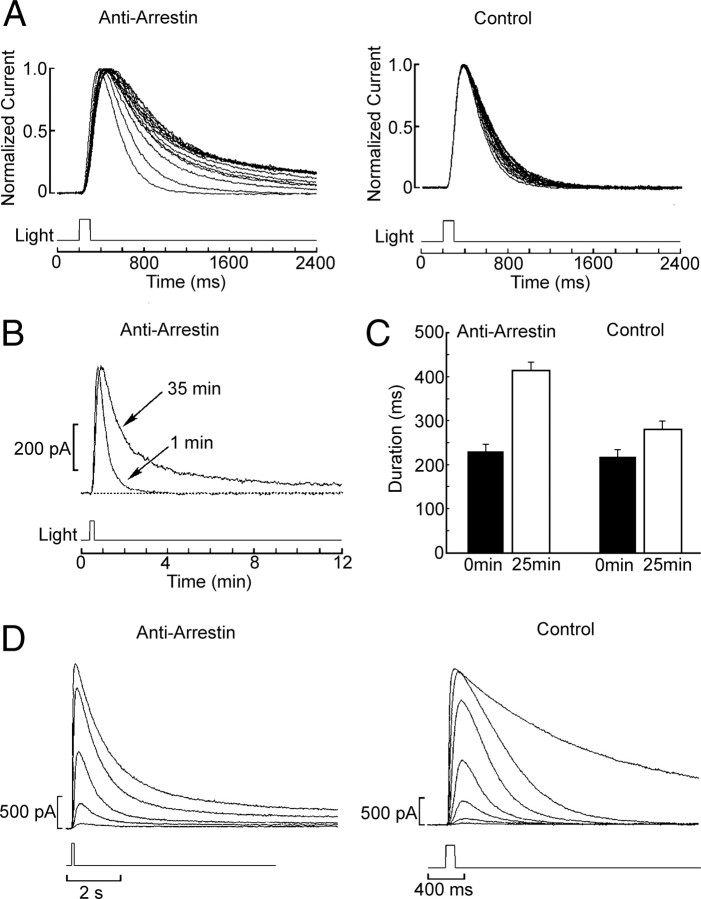Figure 4.
Anti-arrestin antibodies (a48K) slow down photocurrent shutoff. Anti-arrestin antibodies were intracellularly perfused (1:200) into whole-cell clamped ciliary photoreceptors. A, Cells were stimulated with repetitive 100 ms flashes of approximately half-saturating intensity (2 × 1013 photons · cm−2 · s−1). Top, Left, Superimposed, normalized photocurrent traces recorded at 5 min intervals. After >10 min of dialysis, the falling phase of the photocurrent became progressively slower. Top, Right, By contrast, in control cells, the fall kinetics only marginally slowed down during the first few minutes of dialysis and stabilized thereafter. B, Comparison of the initial flash response and a response after 35 min of dialysis with the Abs, shown on a compressed time scale, to highlight the duration of the slowly deactivating tail (different cell; light intensity 4.7 × 1013 photons · cm−2 · s−1). C, Summary of the anti-arrestin antibodies effect on the photocurrent kinetics. The duration at half-maximal amplitude (FWHM) of the initial light response and after 25 min of dialysis was averaged for control cells and for cells dialyzed with anti-arrestin antibodies (1:200); error bars indicate the SE. The difference across the two groups in the relative lengthening of the photocurrent over time was statistically significant at the 0.01 level. D, Slow photocurrent shutoff after antibody treatment, with subsaturating light stimulation. An intensity series with flash intensity incremented at 0.6 log step was measured in a photoreceptor treated extensively with anti-arrestin antibodies (left). Even light responses in the linear range exhibited a long-lasting tail, unlike in control conditions (right), where only upon reaching saturation was the time course of the photocurrent prolonged. Intensity of the unattenuated light: 7.48 × 1014 photons · cm−2 · s−1. The attenuation series for the anti-arrestin antibody-treated cell was −3.2 to −0.8 log at 0.6 log increments, and for the control cell, −3.6 to 0 log at 0.6 log increments. Holding potential, −30 mV throughout.

